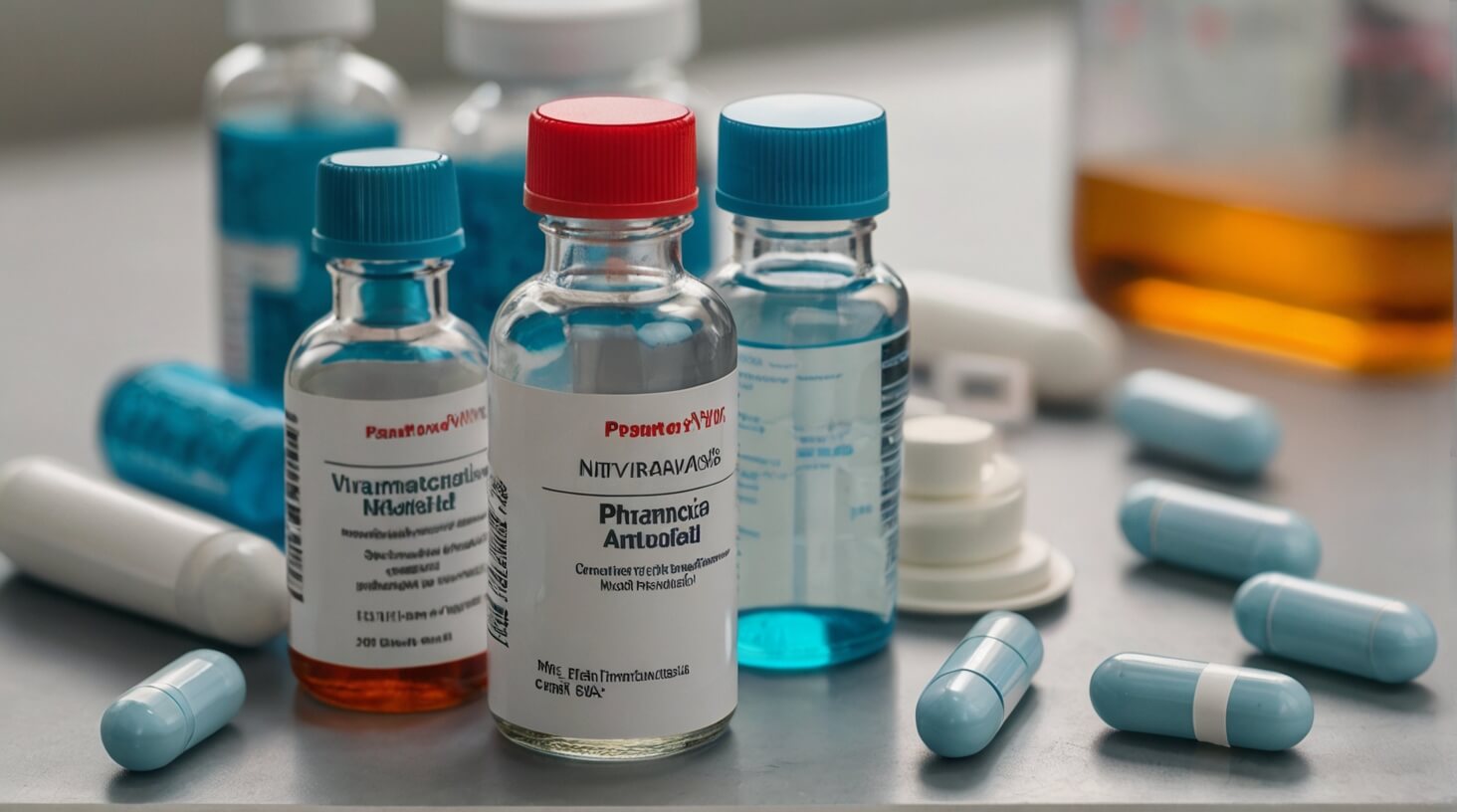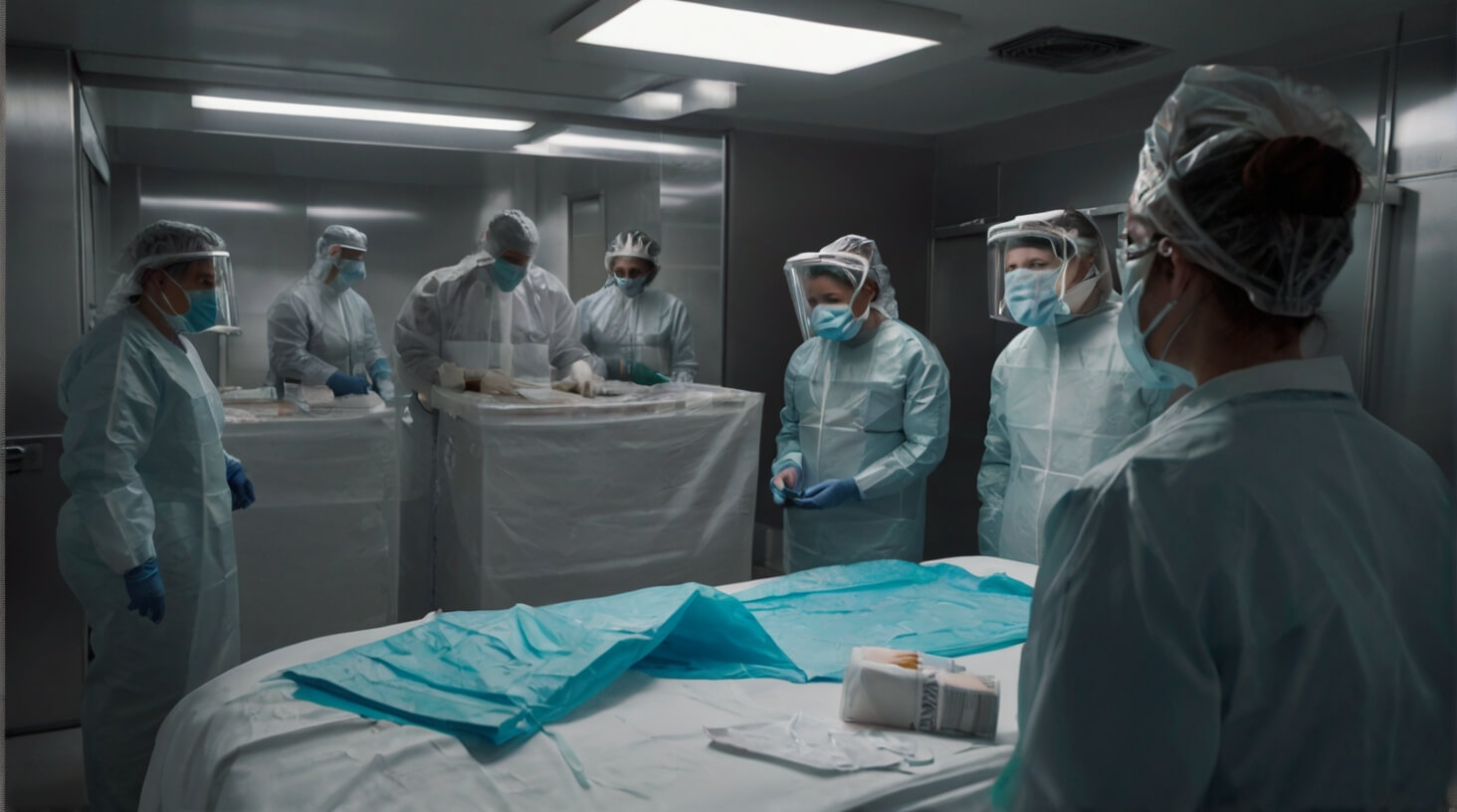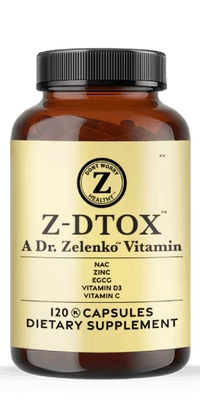As you stand on the shoulders of medical giants who’ve grappled with pandemics past, you’re now faced with the modern challenge of containing viruses that are ever-evolving and increasingly cunning. Your arsenal includes a range of antiviral techniques, from precision-targeted pharmaceuticals to broad-spectrum immunization strategies, all designed to outmaneuver these microscopic adversaries. Quarantine protocols, biosecurity measures, and contact tracing methods form the backbone of your defense, supported by public health policies that adapt as quickly as the viruses themselves. Yet, even with these tools at your disposal, you’re aware that the true battle lies in staying one step ahead. As you ponder the complexities of viral containment, consider how emerging technologies might tip the scales in our favor, and what role you could play in a landscape brimming with both peril and promise.
Key Takeaways
- Antiviral techniques, including pharmaceutical antivirals, immunization strategies, and monoclonal antibody therapies, play a crucial role in viral containment.
- Proactive measures, such as development of new strategies to confront emerging pathogens and swift tracing and management enabled by digital tools, are important in containing viral outbreaks.
- Quarantine and isolation protocols, including monitoring for symptoms, testing, and isolating exposed individuals, are vital in preventing virus spread and halting transmission chains.
- Biosecurity measures, such as adherence to hygiene practices, controlled access to sensitive zones, and use of personal protective equipment (PPE), are essential in safeguarding individuals’ health and preventing contamination.
Pharmaceutical Antivirals

To combat viral infections effectively, pharmaceutical antivirals are engineered to disrupt specific viral mechanisms or bolster host defenses, thereby curtailing the virus’s ability to replicate and spread. These antiviral drugs are the result of rigorous drug development processes that aim to identify compounds capable of inhibiting viral replication or the essential host cell machinery that viruses exploit.
Central to these drug discovery efforts are clinical trials, which are meticulously designed to evaluate the safety and efficacy of antiviral candidates. An example of a critical target for these drugs is the RNA-dependent RNA polymerase (RdRp), an enzyme that many viruses use to copy their RNA. Inhibiting RdRp can effectively thwart viral replication, significantly reducing the viral load in the patient.
Additionally, some antiviral agents focus on host factors, such as metabolic pathways that are hijacked by viruses. By targeting these pathways, the development of broad-spectrum antivirals becomes possible, potentially offering protection against a range of viruses and reducing the likelihood of resistance.
Neutralizing monoclonal antibodies represent another frontier in antiviral therapy. These antibodies are designed to recognize and neutralize specific viral proteins, preventing the virus from entering and infecting healthy cells.
For an antiviral drug to be considered effective, it must demonstrate substantial benefits in clinical trials and receive approval from regulatory bodies like the Food and Drug Administration. The ultimate goal of these endeavors is to provide healthcare professionals with reliable tools to manage and treat viral infections, thereby serving communities and improving global health outcomes.
Immunization Strategies
Immunization strategies regularly employ vaccines as a preventative measure, leveraging the body’s immune response to guard against specific viral threats. These strategies are essential to public health, aiming not only to protect individuals but also to achieve herd immunity, thus shielding communities from the spread of infectious diseases.
The development of vaccines is a complex process, focusing on the stimulation of the immune system to produce neutralizing antibodies. These antibodies are crucial as they specifically bind to and neutralize pathogens, preventing them from infecting cells and propagating. The production of antibodies, alongside the generation of memory cells, ensures long-term immunity against viral infections.
You’re likely familiar with the various types of vaccines, each designed to elicit an immune response against viral threats in different ways. To clarify, here’s a breakdown in a table format:
| Vaccine Type | Mechanism of Action |
|---|---|
| Live Attenuated | Uses a weakened form of the virus to elicit immunity |
| Inactivated | Uses killed viruses to trigger an immune response |
| Subunit | Contains only parts of the virus to stimulate immunity |
| mRNA and Viral Vector | Deliver genetic material to cells to produce viral proteins, inducing an immune response |
Beyond traditional vaccines, modern immunization strategies also include monoclonal antibody therapies. These therapies use neutralizing monoclonal antibodies, which are laboratory-made molecules engineered to serve as substitute antibodies that can restore, enhance, or mimic the immune system’s attack on cells.
The clinical benefit of these immunization strategies is clear, as they have substantially lowered the incidence and mortality of various infectious diseases. Your commitment to vaccine development and administration is vital in continuing this legacy of disease prevention and control.
Quarantine Protocols

Quarantine protocols serve as a critical barrier against the spread of infectious diseases by isolating exposed individuals to contain potential outbreaks. During a public health emergency, such as a global pandemic, these protocols are paramount in halting the spread of virus and safeguarding communities.
When you implement quarantine protocols, you’re not just following a procedure; you’re activating a containment shield that protects the uninfected population. Quarantine measures target those who may have been exposed to a viral infection but are not yet symptomatic. By keeping these individuals separate from the general population, you’re preventing the virus from finding new host cells and multiplying, a process that’s critical in managing infection in human cells.
- Key Components of Quarantine Protocols:
- Duration: Based on incubation periods, which can vary by virus.
- Restrictions: Limiting movement to reduce potential transmission.
- Monitoring: Checking for symptoms to identify infection.
- Testing: Confirming presence or absence of the virus.
Biosecurity Measures
Biosecurity measures form the cornerstone of infection control, establishing rigorous protocols and practices to mitigate the risk of viral spread in diverse environments. As you’re dedicated to serving others, it’s essential to understand that these measures are the bedrock of viral containment. They are designed to prevent the transmission of pathogens that threaten public health, whether in healthcare facilities, research labs, or agricultural areas.
Your role in the implementation of these measures can’t be overstated. You must ensure strict adherence to hygiene practices, such as handwashing and surface decontamination, to curb the spread of virus families known for their resilience and adaptability. Controlled access to sensitive zones is another critical aspect, preventing unauthorized entry that could lead to contamination. The use of personal protective equipment (PPE) is a non-negotiable standard in protecting both staff and the community from exposure to infectious agents.
Early detection through vigilant surveillance is pivotal in combating viral threats. This proactiveness enables the timely deployment of antiviral agents and informs the development of new strategies to confront emerging pathogens. Quarantine and isolation protocols, previously discussed, are integral to these biosecurity measures, isolating affected individuals to halt transmission chains.
In the realm of Global Health, your commitment to pandemic preparedness through these biosecurity measures is indispensable. Biocontainment and decontamination procedures must be executed with the utmost precision, ensuring the safety and efficacy of the environments you’re safeguarding. Remember, the health of countless individuals rests on the robustness of the biosecurity measures you uphold.
Contact Tracing Methods

Having established the importance of biosecurity measures, we now turn our focus to contact tracing methods, a critical tool for interrupting the chain of viral transmission by identifying and alerting those who may have been exposed. This process is vital for controlling the spread of viruses, including the Severe Acute Respiratory Syndrome (SARS-CoV), Middle East Respiratory Syndrome (MERS), and other pathogens capable of causing widespread human infection.
You’ll find that contact tracing involves a meticulous approach:
- Identifying the infected host and their close contacts
- Gathering information about the host’s movements and interactions
- Assessing the risk of transmission to each contact
- Notifying and advising exposed individuals
- Providing guidance on quarantine and testing
- Ensuring follow-up for signs of infection
The effectiveness of contact tracing is contingent upon its timeliness and precision. Digital tools have been harnessed to enhance these efforts, enabling public health authorities to swiftly trace and manage contacts. Mobile apps, for instance, can automatically notify users who have been in proximity to a confirmed case of a viral infection.
However, the success of these methods also relies on human factors. It’s imperative that individuals cooperate with health authorities, providing accurate information and adhering to recommended measures. This is particularly crucial when dealing with highly contagious viruses that infect and replicate within human cells, such as the Respiratory Syndrome Coronaviruses.
Public Health Policies
In the realm of infectious disease control, public health policies serve as the cornerstone for safeguarding populations against the threat of viral outbreaks, including HIV, MERS-CoV, SARS-CoV, and COVID-19. You must understand that these policies are a broad spectrum of strategies designed to prevent the onset and reduce the spread of infectious diseases. They encompass vaccination programs validated through rigorous preclinical and clinical trials, quarantine protocols informed by clinical efficacy data, and disease surveillance systems that provide real-time information on viral transmission patterns.
As someone devoted to serving others, it’s important to recognize the role of the World Health Organization in shaping international public health policies. Collaboration at both national and international levels ensures that policies are not only responsive to current threats but also adaptable to future challenges.
Public health policies are crafted to minimize morbidity and mortality by promoting community health through education, awareness campaigns, and equitable access to healthcare resources. For instance, the US FDA’s approval process for antiviral medications involves stringent randomized clinical trials to ensure that treatments are both safe and effective. It’s your duty to advocate for these evidence-based practices, ensuring that the community benefits from interventions with proven efficacy.
The implementation of these policies requires a concerted effort among governments, healthcare providers, and communities. Effective public health policies can significantly mitigate the impact of viral infections, contributing to a society’s overall well-being and resilience. By understanding and supporting these initiatives, you play a vital role in the collective effort to protect and enhance public health in the face of viral threats.











